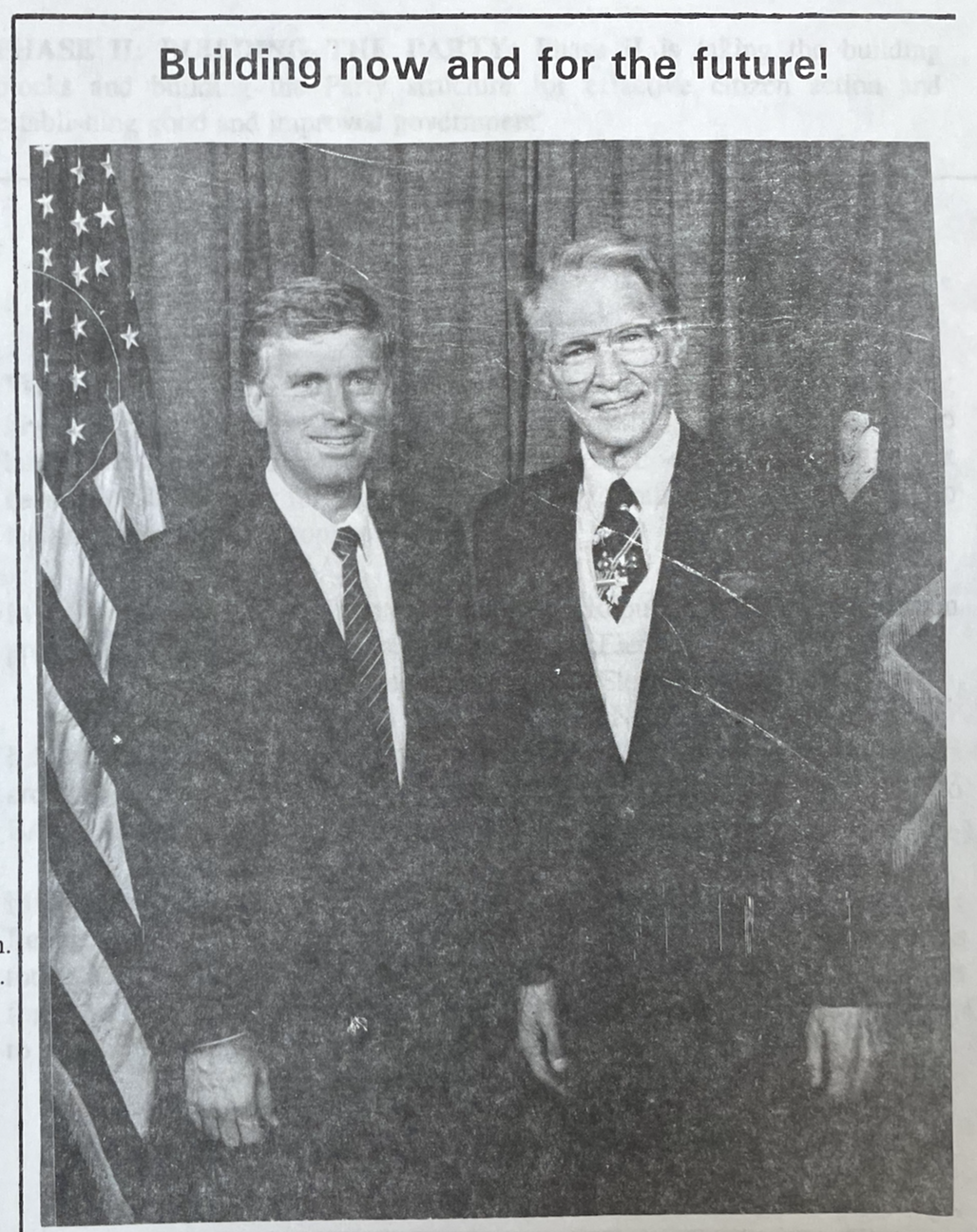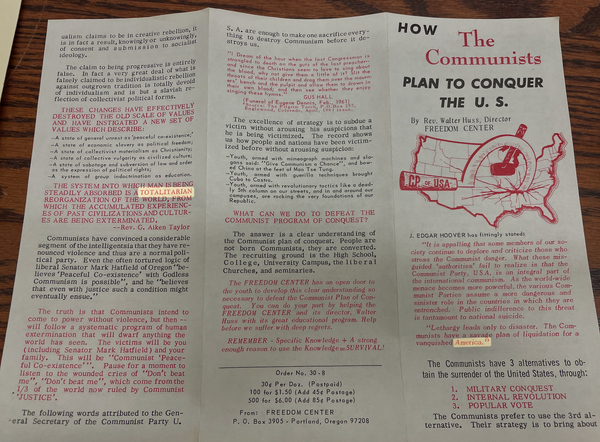In 2003 a Collector of Kooky Cold War Shit Got to Rummage Around in Walter Huss's Library: Here's Her Story
A window into Walter's world in its twilight years, and some thoughts about why people like me and that bookseller (and maybe you too?) find right wing kooks like Huss so morbidly compelling
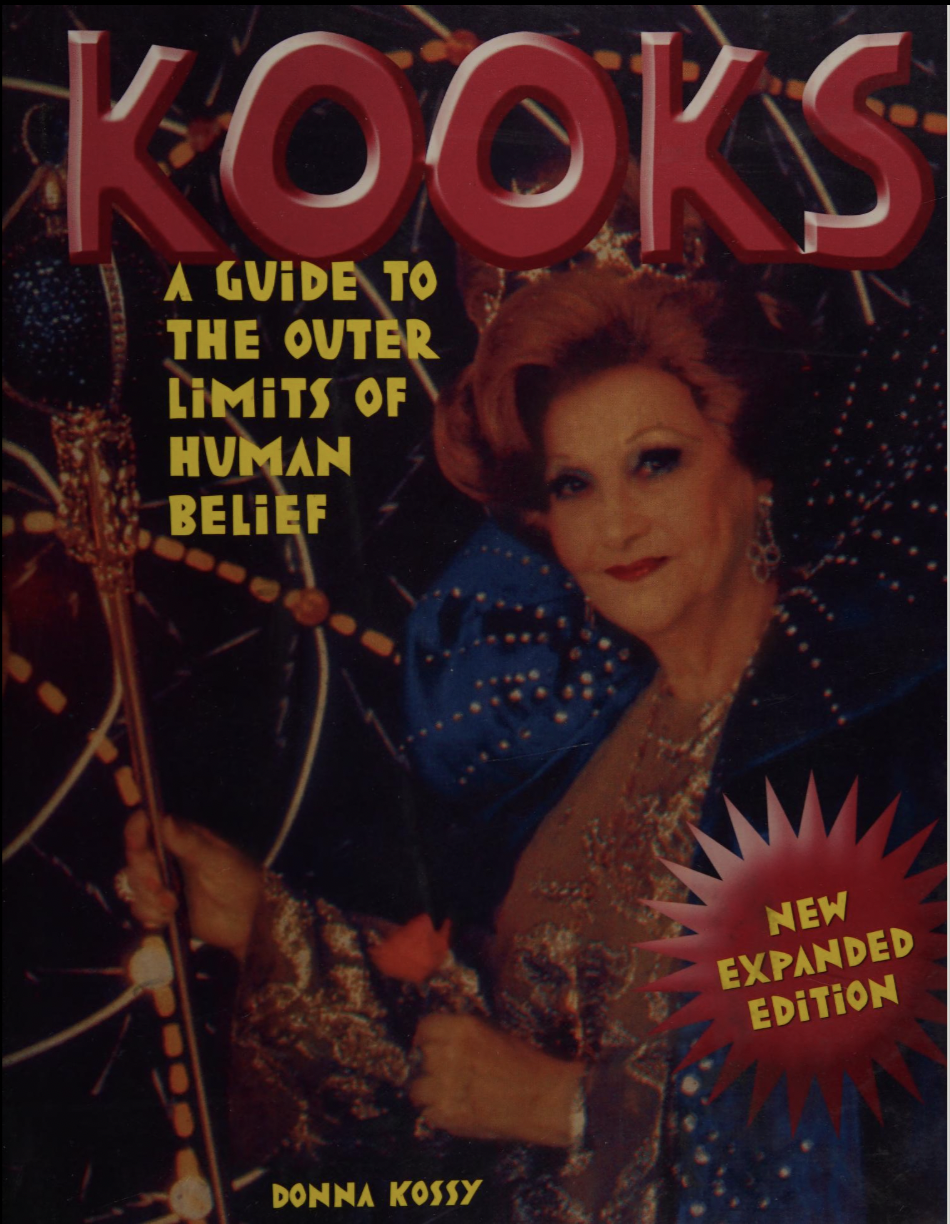
About a month ago I had the good fortune to meet Donna Kossy, a Portland bookseller, creator of the Book Happy zine (1997-2003) and curator of the online Kooks Museum (1996-1999). Donna sells an amazing collection of strange old books from her online shop, a collection that might appeal to the sort of sickos who subscribe to Rightlandia. Take, for example, this gem from the Christian Home Series which can be yours for a mere $25.
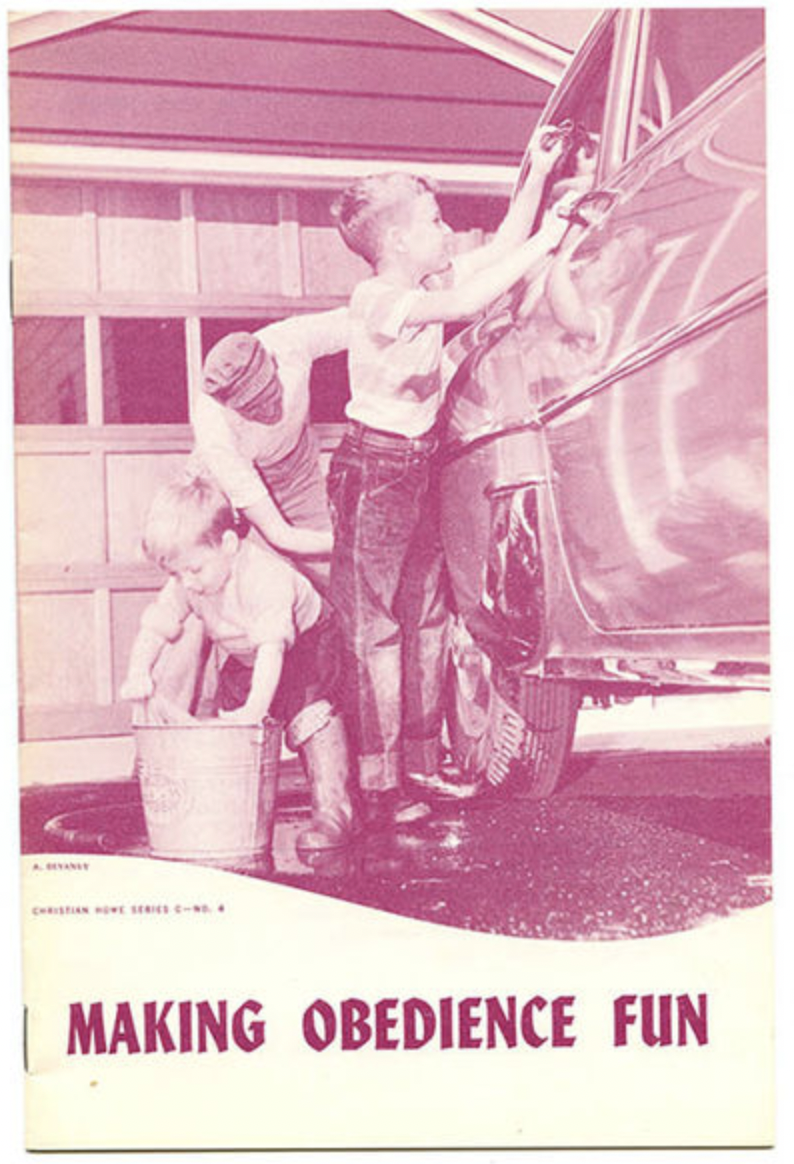
Or this ever useful 1985 guide to Hypnosis in Dentistry, a book that was undoubtedly this author’s, uh, crowning achievement.
Rightlandia is a reader-supported publication. To receive new posts and support my work, consider becoming a free or paid subscriber.
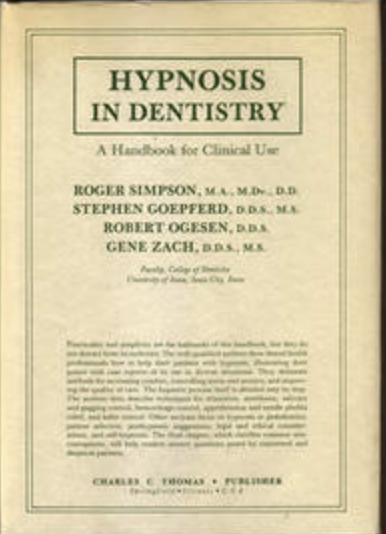
In the 1980s and 90s Donna became fascinated by the world of American “kooks,” and in 1994 she wrote a book by that name which told the stories of a diverse array of her fellow Americans who, let’s just say, inhabited mental worlds a few clicks outside the boundaries of what most people would have considered to be “reality.”
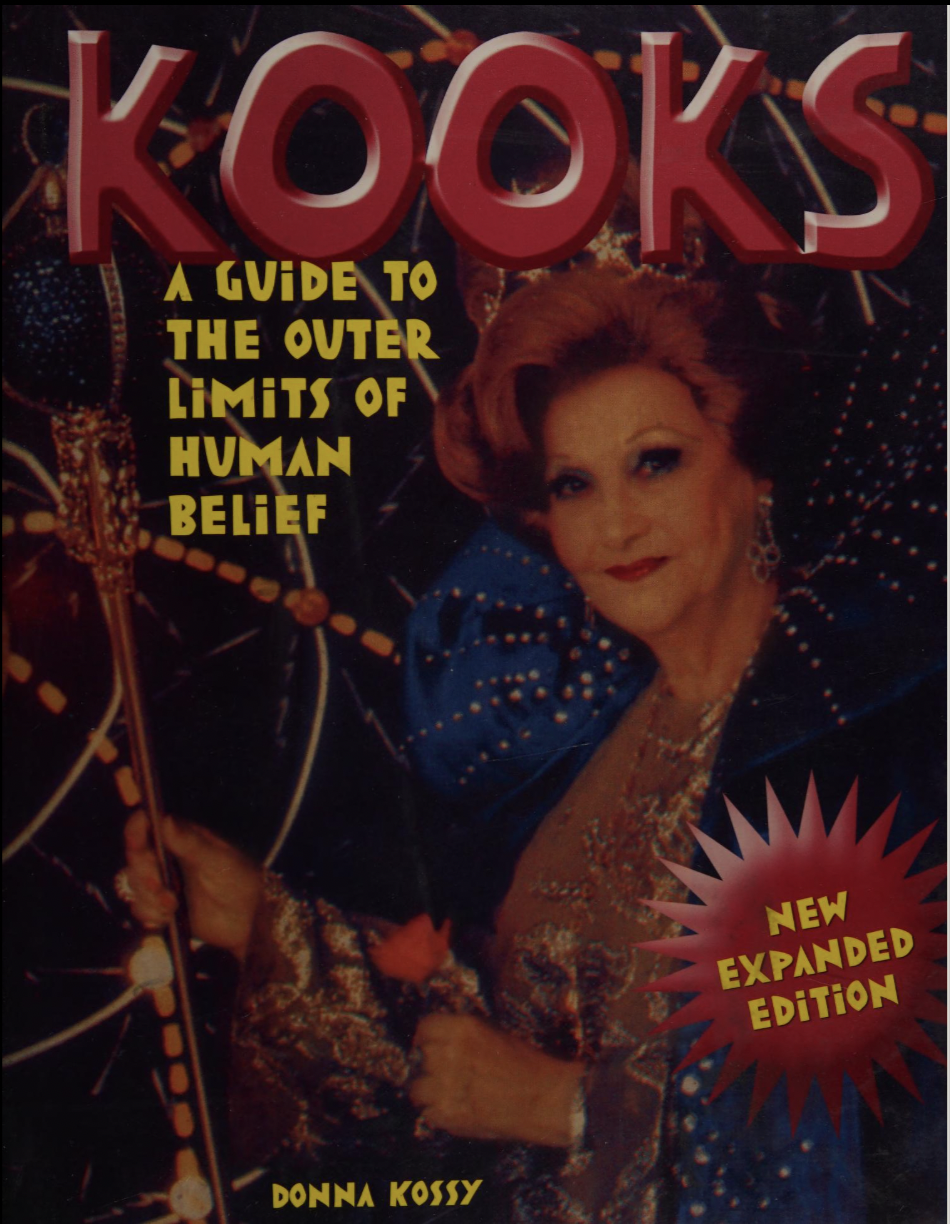
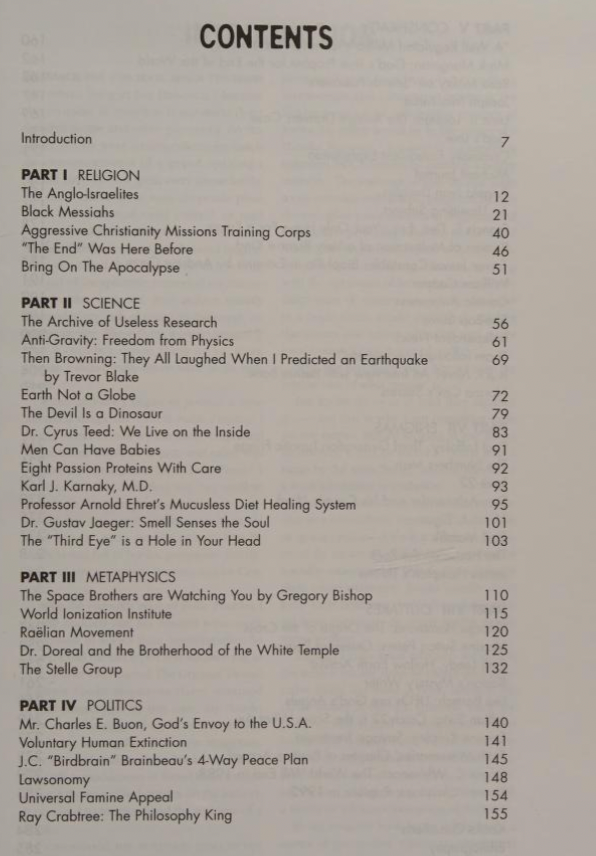
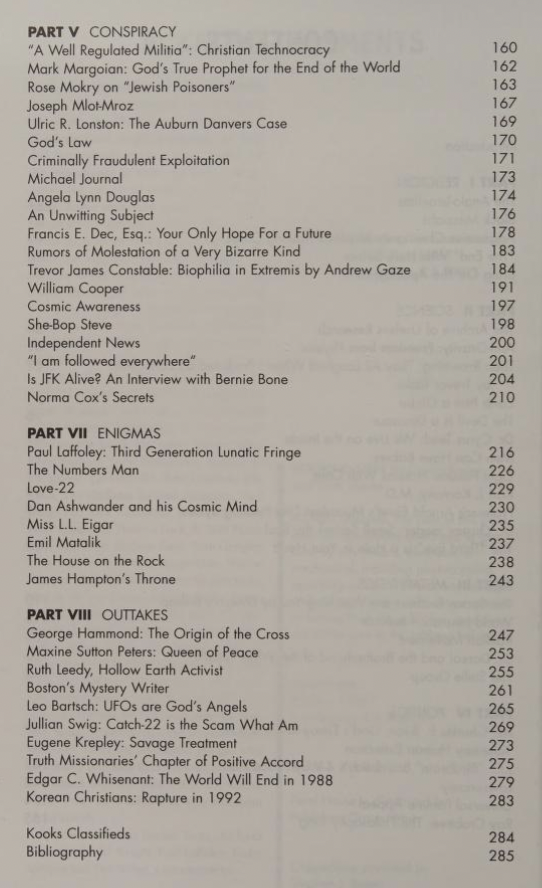
Given Donna’s longstanding interest in American kookiness, you can imagine her excitement when in 2003-4 she caught wind of an elderly, eccentric right wing weirdo in Southeast Portland named Walter Huss who was selling off his enormous book collection. Like many Portlanders, she’d noted with interest the large, weather-beaten signs on Huss’s Belmont Avenue house advertising tea tree oil for sale as a cure for toe fungus, and so she leapt at the chance to explore that house’s innards. As with most things Walter Huss related, Donna’s experience of buying books from the guy was decidedly strange. Many years ago Donna wrote up an account of her encounters with Huss and she’s given me permission to share it with you here.
THE SECRET OF THE UPPER ROOM by Donna Kossy
Several years back I attended an unusual estate sale in a house that Ken & I had noticed long before the sale. We had identified it as a possible “kook house” because of the look of the homemade signs out front advertising tea tree oil. I hadn’t paid all that much attention to it, but did notice it. The sale was confined to the basement, which contained many tall stacks of printing paper, a printing press, and low bookshelves all along the perimeter of the room. After my first gander at the shelves, I could see that I would be here a long time, took off my jacket and began making piles, glancing at them every so often to make sure no one else came near them. The shelves were packed with mostly cold war era anti-communist, antisemitic and far right literature, including many, many pamphlets. In addition, there were pamphlets and books addressing health concerns, the type you would expect, anti-fluoridation, but also natural healing and warnings about impurities and poisons in modern food. I don’t know how long I spent there but I felt as though I had searched the shelves quite thoroughly by the time I decided to check out. The elderly man (named Walter Huss) who checked me out told me that the book and pamphlet prices varied depending on their size. I figured he would look at how much I was buying and give me a nice round figure for the lot, or take an offer. Instead, I stood there while he tallied up my purchases one by one, very slowly, in pencil on a note pad. 15¢ for this pamphlet, but only 10¢ for that one because it’s so small. 25¢ for the paperback. 50¢ for the hardcover. I attempted to offer him ten or twenty dollars for the lot but I don’t think he could hear me.
I wondered what he was thinking as he examined such items as The UN Is Spawn of the Illuminati and The Federal Reserve Hoax, glad that he didn’t say too much about my choices. I estimated his age as about 90, and was certain he was holding this sale as a prelude to his imminent demise.
Some time later, I noticed an ad for a week-long sale at the same address. I showed up as early as I could manage in those days— this was before my adoption of the early bird strategy of book scouting. Though everything at the sale looked about how I’d left it a few months before, I found plenty more pamphlets to buy. Old man Huss was absent—but still alive—and his son was now in charge. Noticing that I liked to buy books, he informed me that there were more books upstairs, in the old man’s study. He had been an activist in the Sixties (though not the usual type) and a publisher. When he was ready, he would begin selling off his personal library, which contained “valuable” and “rare” volumes. Out popped my business card. When the sale begins, call me.
I returned several times that week, each time inquiring after the books in the upper room. Had they been taken downstairs yet? Could I go up there are see them? But each time I was told the old man wasn’t quite ready to sell his better books. Instead, I was reduced to scratching at the remains in the basement. One last time I reminded the younger Huss to call me when his dad was ready to sell, and then gave up. I stopped expecting to ever see the inside of the upper room. But as weeks turned to months I continued to worry about old Mr. Huss and his upstairs library. I was certain that both Huss and his books were no more. Huss Junior had probably sold the precious volumes to another dealer, probably to Powell’s, probably for a pittance.
I was wrong, of course. A few months later, I noticed yet another sale going on at the house. I stopped in, but this time, the basement was clear of all books. Fearing the worst, I inquired about the upper room. The old man was alive, the books intact. But still no deal.
Yet again, I gave up on needling Huss’s son about the books, but of course couldn’t stop wondering what was to become of those, well, I wasn’t sure what they could be. By this time, I was imagining that entering the upper room would be something like raiding Hitler’s library.
In the meantime, I had been supplementing my income by doing some book cataloging for my friend, Andrea, whose bookshop is located not too far from the Huss residence, on the same street in fact. Never one to miss a book-buying opportunity, Andrea had attended the basement sales, and had also been told about the books in the upper room. Every so often I would mention the upper room to her with wistful longing. She too wondered about the books in Huss’s office, though with slightly less urgency, as these kinds of items were outside her comfort area. But she knew well how I itched to be let into that upper room.
Well, one day I received the call, but it wasn’t from Walter Huss or his son. It was from Andrea. The old man had called her and asked if she’d buy all the books in the upper room. She had made an appointment and very kindly had decided to let me in on the deal.
THE SECRET OF THE UPPER ROOM (Part II)
At the close of our last episode, I had learned, after an arduous wait, that I was finally to be admitted into Cold Warrior Walter Huss’s library—along with another book dealer. The following is what occurred to the best of my recollection, though I must admit a certain level of confusion as to how it all unfolded.
I hastened to Andrea’s house, anxious to explore the hidden catacombs of Walter Huss’s Cold War paranoia. We set out in Andrea’s van, and arrived about ten minutes early for her appointment. After parking out front, we hesitantly made for the side entrance, passing a dazed-looking, rather disheveled young man sitting outside. Could this latter-day hippie be another of Mr. Huss’s progeny, the hyper-conservative patriarch’s bitter reminder of the hellishly permissive Sixties? One didn’t want to dwell on the matter, lest we lose focus on the mission at hand. I had waited long enough.
Mr. Huss was nowhere in sight, but someone summoned him. When he appeared, he acted confused, didn’t seem to know about Andrea’s appointment. I began to have my doubts that we would ever actually see the books in the upstairs room. But Andrea somehow got through to the old man and we were let into the house.
The moment of truth arrived and we were guided upstairs and into a cramped office cluttered with books, the kind of space one navigates carefully, lest an undisciplined arm or foot should unwittingly upset a precarious pile of paper.
The old man teetered into the room, still giving me the feeling that we were not exactly welcome. There was some sort of misunderstanding underway between Andrea and Mr. Huss: he thought she would buy the entire lot, but she deemed this impossible. I began preparing myself for the possibility he would throw us out any minute. But somehow she convinced him to let us sift through the collection and he left us alone with our prey.
I didn’t know where to begin, but very quickly ascertained the nature of the collection. I could find nothing sensational, rare or surprising or beyond the extremes I had already witnessed in the basement. Instead, the room was filled with books and pamphlets very similar, if not identical to the items I had already loaded up on, on previous occasions. In addition, there were many large reference books. Not exactly the Nazi bunker collection of my dreams, but not so disappointing either: I can always use extra copies of Brain-Washing: A Synthesis of the Russian Textbook on Psychopolitics (of which there were about five), Murder by Injection, (always in such beautiful, unread shape!), and The Federal Reserve Hoax. In addition I found Kenneth Goff pamphlets and materials by other antisemitic cold war troublemakers that I hadn’t seen before—and I can’t honestly remember what else. After a short while, I had gathered two or three tall stacks of premium Book Happy stock. Andrea too had her piles. I would have been quite ready to start in on another round but had reached a logistical impasse. The remaining books were trapped within stacks that I could see but not reach.
Andrea, meanwhile, was ready to give up and summoned the old man. While we waited, I decided to offer him $100 for my piles. But when he finally appeared, he again hesitated to close the deal. In fact, I wasn’t sure he knew who we were or why we were in his study. I made him my offer and Andrea made hers. Then there was a very long period of silence. I couldn’t tell when this signified indecisiveness or incomprehension. Again, I began to brace myself for the possibility I would have to leave without the Goff collection, without the textured orange and green and yellow pamphlets, without the quaintly forthright testaments to outrage, paranoia and bigotry that had stimulated my curiosity.
After many minutes of suspense, Andrea—somehow—convinced him to take our money. The tension in the room dissipated, and Huss became suddenly personable as Andrea and I wrote our checks. He referred to us as mother and daughter and said something about how we were “sassy.” It didn’t make any sense, but I was relieved that he was happy with the deal, relieved I would be able to take my books home, and especially relieved that neither Andrea nor I had let slip that we were both Jews.
I love the sense of wonder, anticipation, mystery, and anticlimactic semi-disappointment in Donna’s story. It wasn’t exactly Hitler’s library she’d been granted access to, but it sure was a smorgasbord of Cold War era weirdness, and all available at bargain basement prices! Despite how much I’ve come to dislike Walter Huss as a person, I found Donna’s account of his frailty and disorientation moving. And I delighted at the sudden twist at the end when we learn Huss was still cogent enough to detect and name the foreign “sassiness” of these two Jewish women booksellers whose deportment so clashed with his archaic ideas about “proper womanhood.” I imagine Huss felt a mixture of pride, bemusement, and sadness seeing these strangers excitedly rummaging around in the treasured remnants of his 50+ year career as a right wing activist.
Huss’s house (which doubled as his anti-communist Freedom Center) had been the buzzing nerve center of the Oregon campaign for Goldwater in 1964, and now 40 years later that hive of right wing enthusiasm felt like a chaotic mausoleum housing the dusty, piled-up ruins of a long dead civilization. Huss’s efforts to transform the Republican Party into a vector of aggressive White Christian Nationalism had, by his estimation, failed. His anti-democratic idealism had been thwarted by “establishment” Republicans like Mark Hatfield and Tom McCall, disappointing squishes like Reagan, and “New World Order” dupes like the Bushes I and II. In the 1990s Huss still held out some hope that “America First” leaders like David Duke, Ron Paul, Lyndon LaRouche, Pat Buchanan, Dan Quayle, or Bo Gritz might inspire a new generation of Christian Patriots to “take back” the GOP and America from the Jewish Communists who he thought controlled everything, but by the Bush 2.0 era Huss saw few signs that such a deliverance was imminent.
The fear-mongering books and pamphlets Huss had lovingly collected over the years contained what to him felt like an inspiring vision of the future—a glorious, anti-Communist America from which the internal enemies had finally been purged and in which the founders’ promise of White Straight Christian Freedom could finally be enjoyed in perpetuity by “real Americans” and their progeny. But now, as he approached the grave alone, disoriented, and afraid, Huss’s estate sale made it abundantly clear to him that those once inspirational books were of interest only to “sassy” booksellers willing to pay a couple bucks to acquire some “kooky” remnants of a bygone era.
When Donna met Huss in the early 2000s he was spending several hours a day listening to and taking notes on sermons by charismatic preachers and faith healers like Benny Hinn, Kenneth Copeland, and Hal Lindsey. After running one last time for Governor in 1998 (unsuccessfully) and running one last time for chair of the Multnomah County GOP (also unsuccessfully), Huss seems to have begun to gradually shift his focus away from making change on earth and toward finding hope and consolation in the spiritual realm.
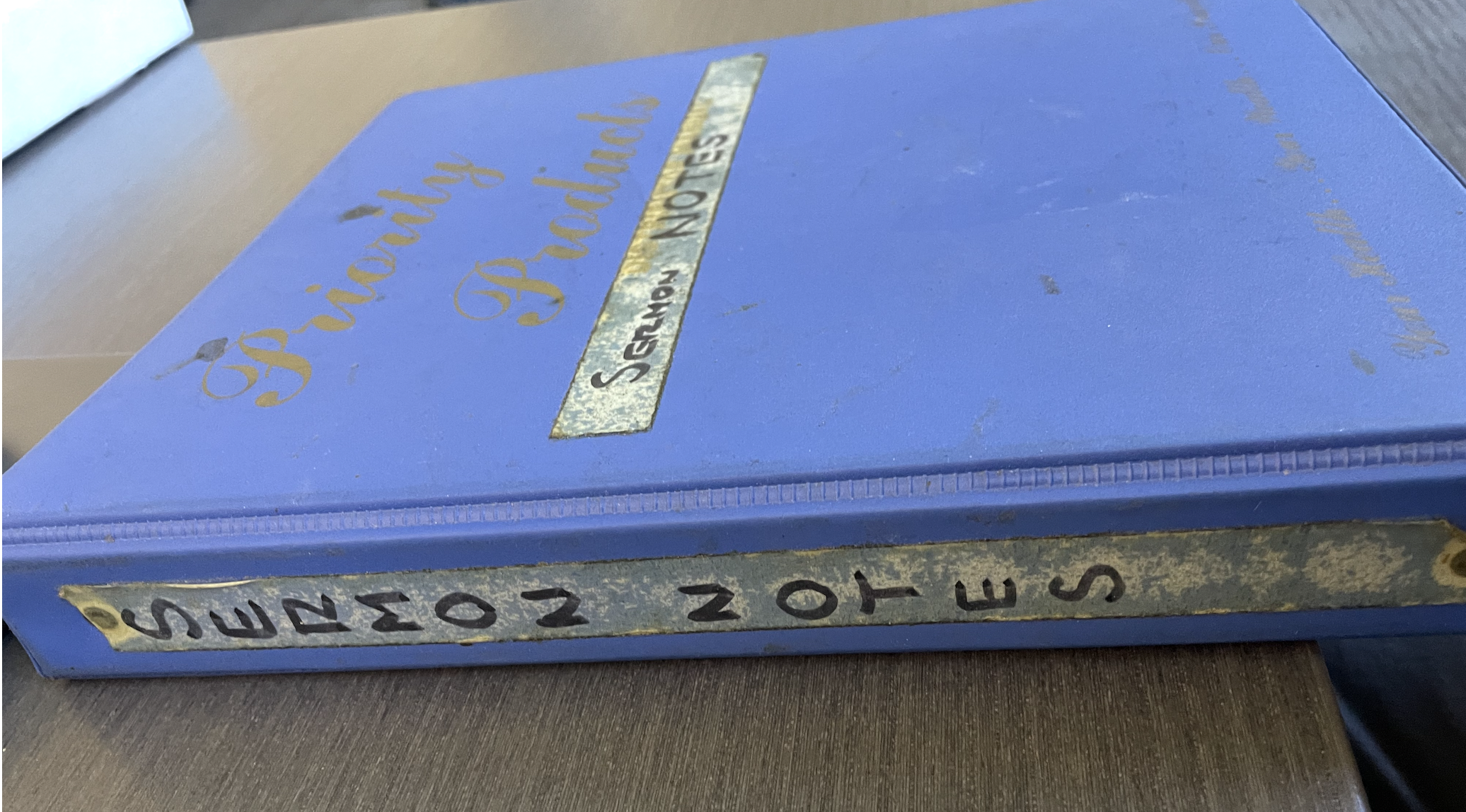
Walter Huss Papers, Box 43, University of Oregon. This binder contains over 300 pages of handwritten notes Huss took on sermons by a wide range of charismatic evangelical preachers between 1998 and 2001. Below is one representative page of those notes.
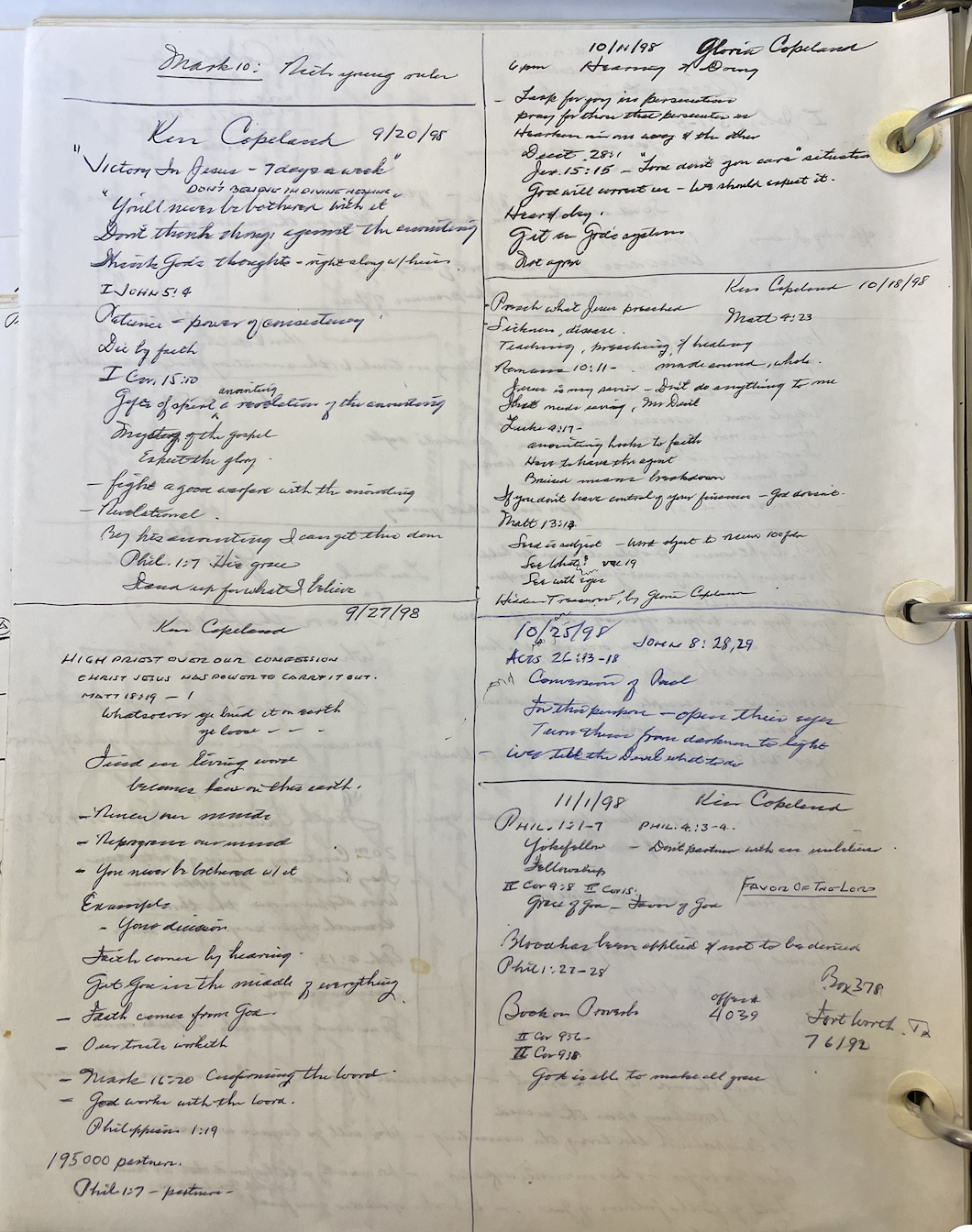
From 1999 to 2002 Huss also devoted much of his time to being a full-time caregiver for his bedridden wife Rosalie. The letter below, protesting a parking ticket in 2000, offers a poignant window into how Huss, a man with limited financial resources, experienced the normal indignities that accompany aging. Huss’s waning years were undoubtedly made more difficult by the fact that only one of his seven children remained on somewhat good terms with him, his rigid and domineering manner having alienated the rest of them.
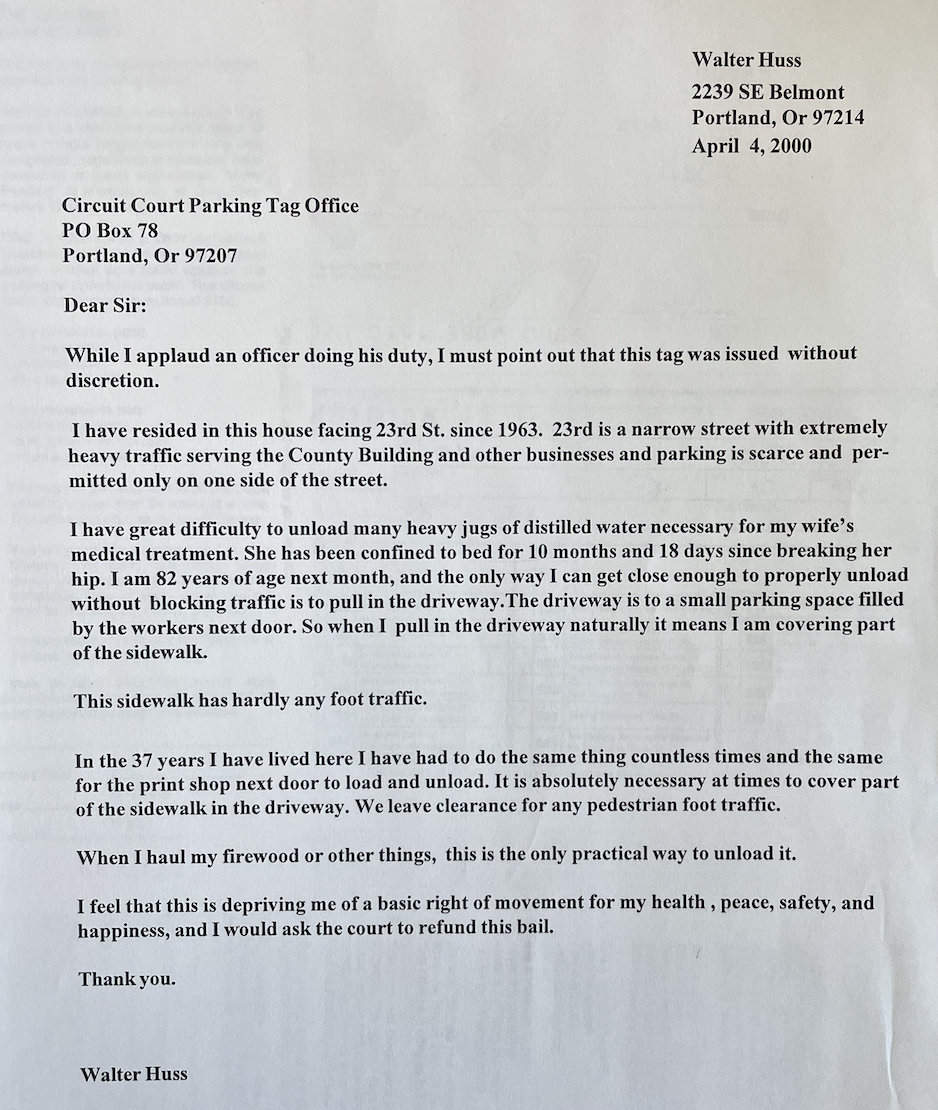
Every time I lug down to my basement the 5-gallon bottles of water1 we get delivered to our doorstep I think back to this image of an 82 year old Walter Huss schlepping bottles of distilled water up the stairs of the house he’d lived in since he was a much more hale and hearty 45 year old. I don’t know for sure, but I suspect the distilled water was part of some kooky treatment for Rosalie that felt very important to Walter, but was probably of no medical use to her. Portland’s water supply was excellent (and, thanks in part to his own activism, not fluoridated), so I don’t know what Walter’s problem with it was.
When Donna Kossy showed up at Huss’s house to buy books in 2003-4, Rosalie had moved into a nursing home and Walter was living alone amidst the reminders of their life’s political work together. This perhaps explains the demeanor of creepy flirtatiousness that Huss snapped into at the end of Donna’s story, like he was re-inhabiting his vestigial persona as a (self-understood) charismatic and virile father of seven who, I’ve been told, had an “eye for the ladies.”
Donna showed me some items from her collection that she thinks probably came from Huss’s lair.
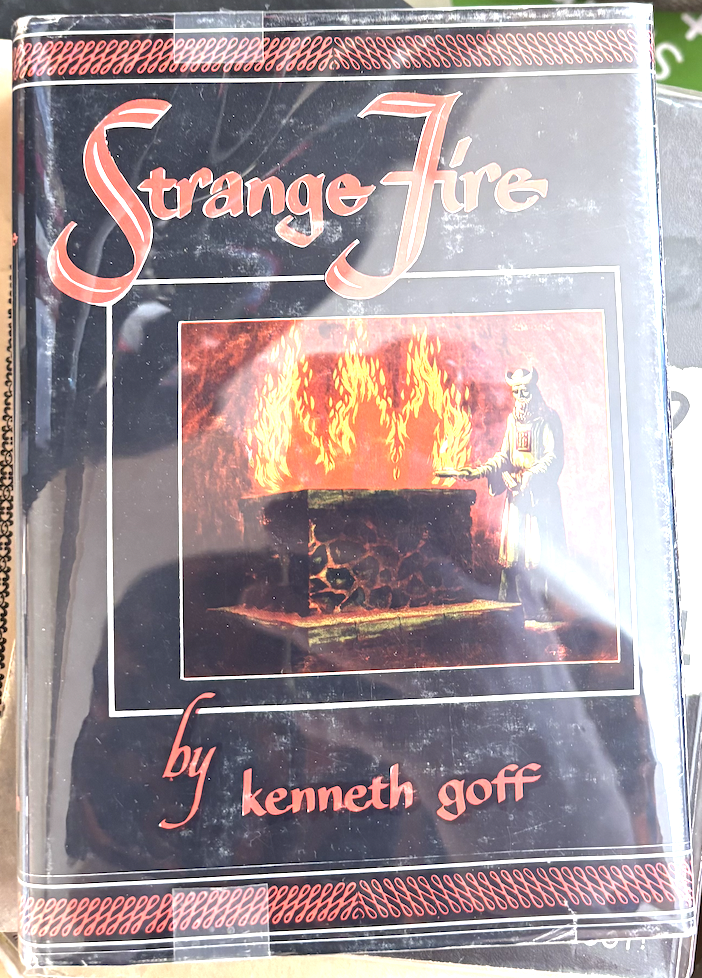
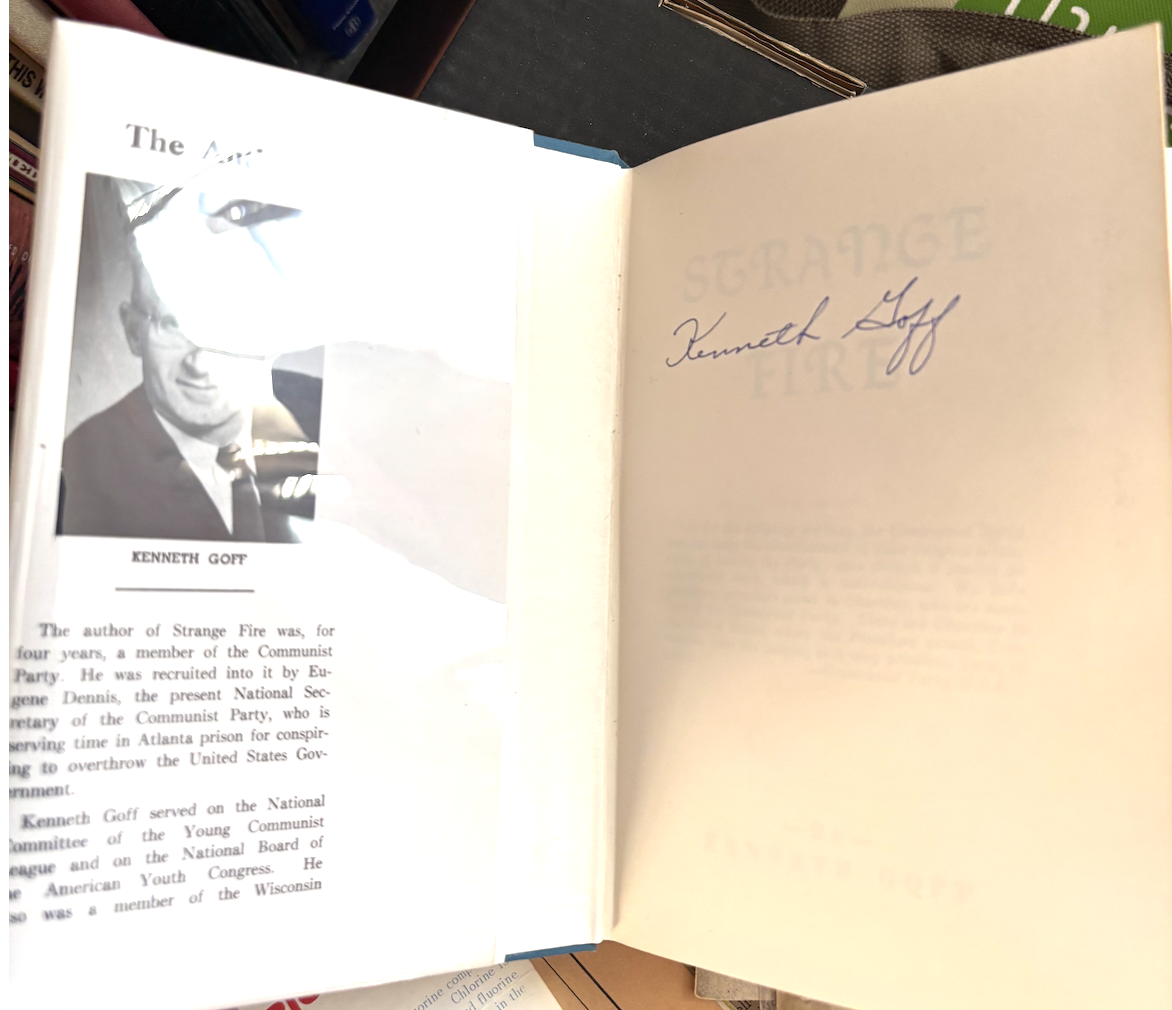
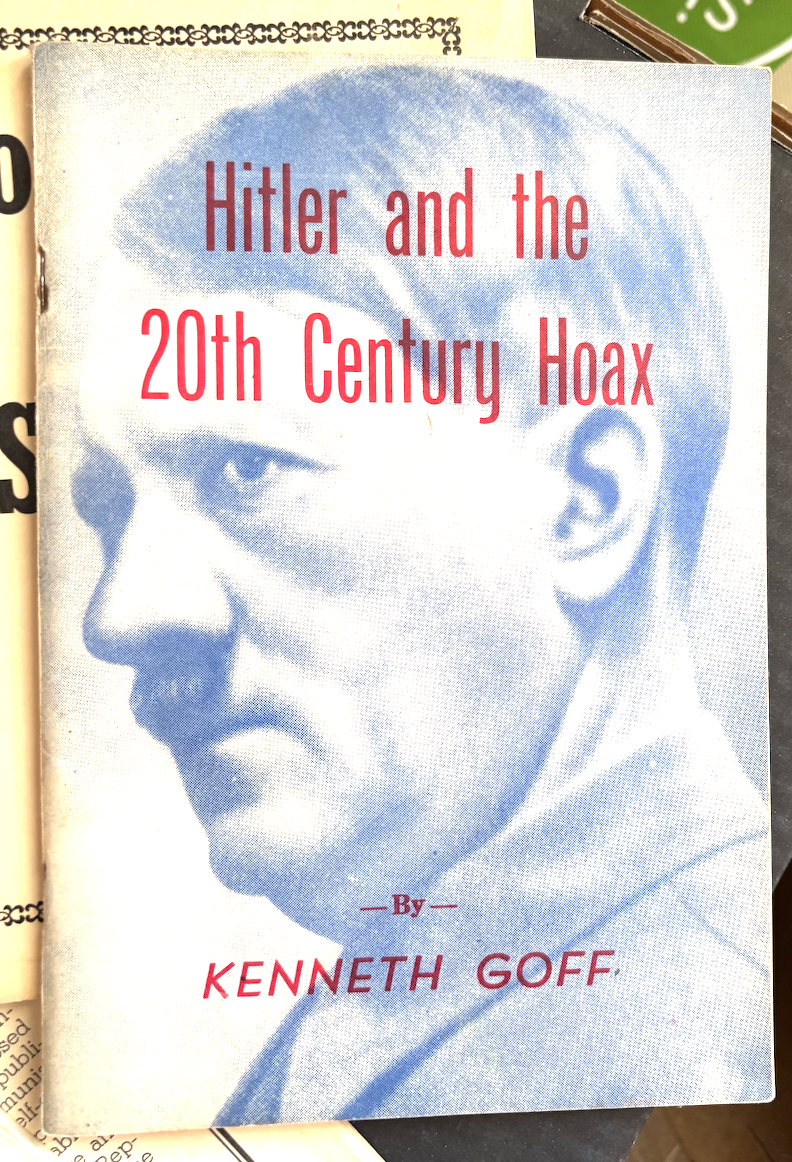
Kenneth Goff (1914-1972) has come up frequently in Rightlandia posts. He and Huss were close compatriots in the 1960s and as late as 1988 one of Huss’s correspondents was waxing rhapsodic about meetings the three of them had attended together. I’ve come to think of Goff as the Forrest Gump of Cold War era right wing nuttery. He’s probably the person most responsible for injecting into American discourse the lie that fluoride was a Communist bioweapon used for the purposes of mind control. He ran a paramilitary training camp in Colorado for white Christian, anti-communist “freedom fighters,” and he was an early disseminator of the claim that The Beatles were using their music to hypnotize youths into becoming Communists. The Goff book about “the Hitler hoax” established an important talking point for many Christian Identity believers like Huss—that Hitler was ackshually Jewish, and that his role in the international Jewish/Communist conspiracy was to secretly allow the Communists to win in WWII. Also, the people who died in the Holocaust weren’t Jewish…rather, the Jews who disappeared from Europe in the 1940s were all secretly sent to the US by Hitler to organize the Communist conspiracy over here. Got that?
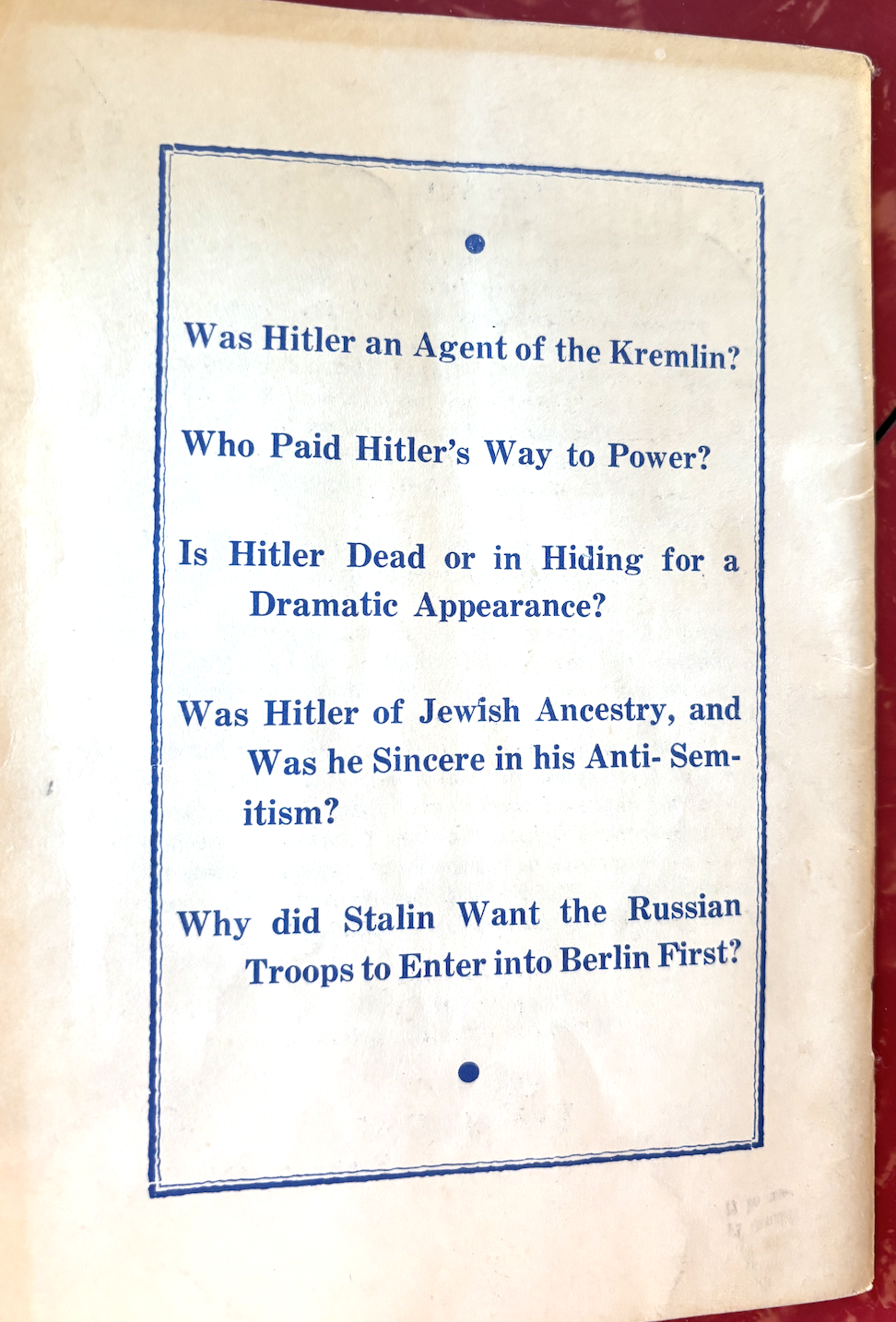
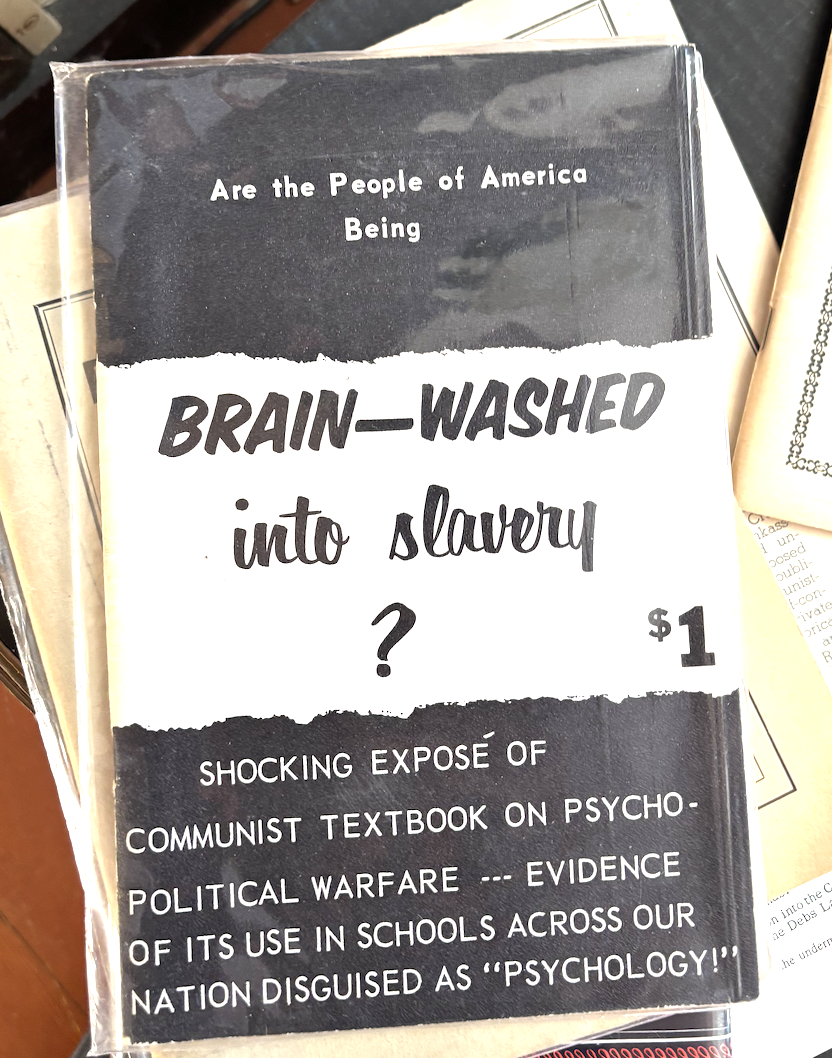
This book has a fascinating history. Kenneth Goff published a version of this, a guide to brainwashing supposedly written by a Russian communist in the 1930s. It appears, however, that the book may have been entirely fabricated by L. Ron Hubbard in 1955, yes THAT L. Ron Hubbard. We should probably leave it to the psychologists to explain why propagandistic liars like Hubbard, Goff, and Huss were so obsessed with the idea that OTHER PEOPLE were trying to poison your brain with incorrect ideas so as to dominate and exploit you.
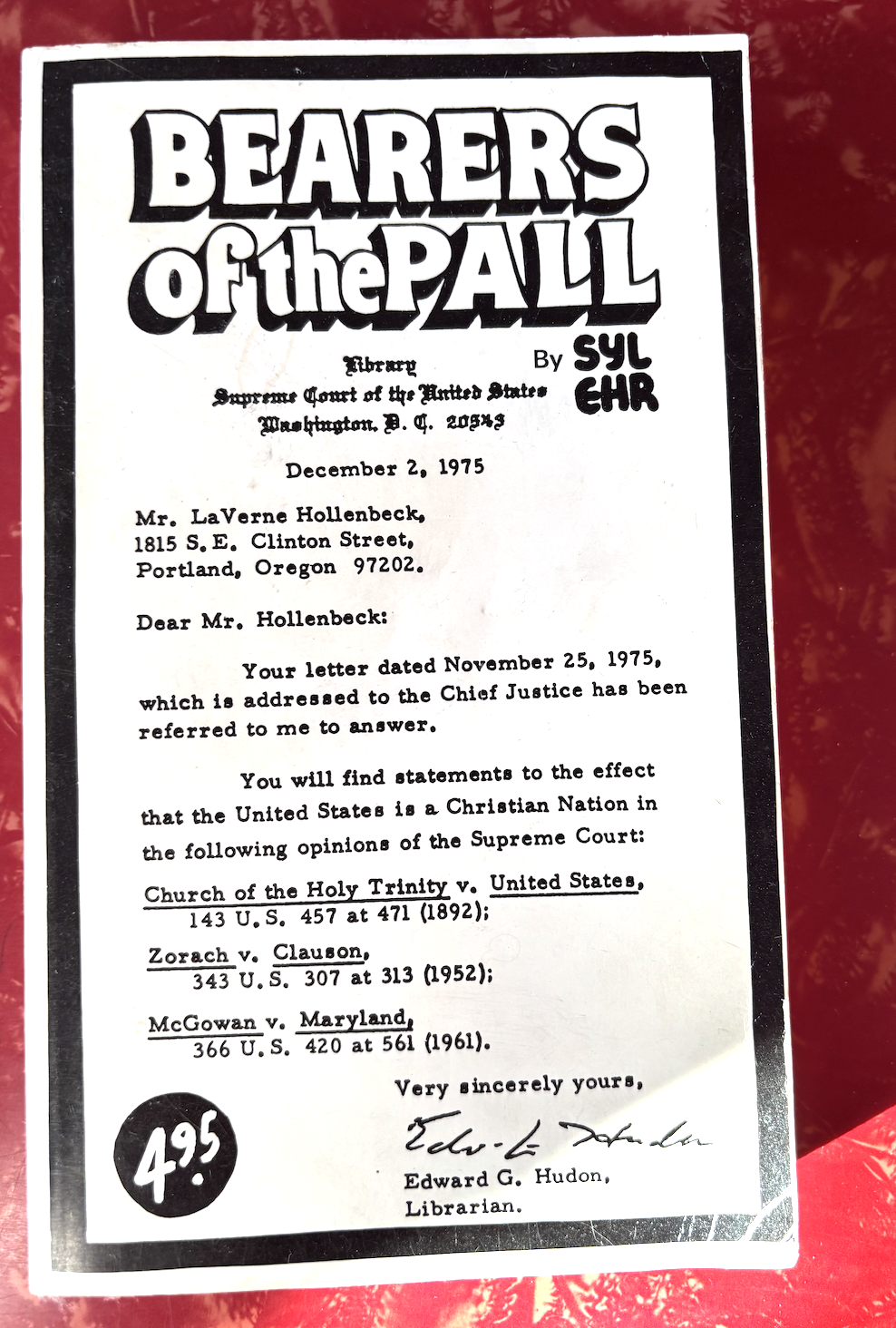
Syl Ehr, a co-leader of Oregon’s Posse Comitatus in the 1970s with LaVerne Hollenbeck, is another obscure figure who makes frequent appearances on Rightlandia. He was a sign painter in NE Portland who ran weekly “Constitutionalist” meetings in a back room of his shop. Ironically, that shop, a key nerve center of white nationalism in Portland from the 1960s into the 1980s, was located on what is now MLK Blvd. Huss attended those meetings alongside a rotating cast of right wing extremists, including the two, mid-1960s Portland neo-Nazis who had been socialized into the US right by Huss, and Lyle Harford VanDyke, Jr., another protege of Huss’s who was a prominent Pearl Harbor truther who worked as an Elvis-impersonating piano player at a Mexican restaurant and believed he could bring people back from the dead. Kinda kooky, no? In 1985 Huss learned from a friend that the FBI suspected him of being involved with the Posse Comitatus, and so Huss acquired a letter from his longtime friends Syl Ehr and LaVerne Hollenbeck, on Posse Comitatus letterhead, stating that neither Huss nor his wife Rosalie were members of the organization. I’m sure that totally allayed the FBI’s concerns.
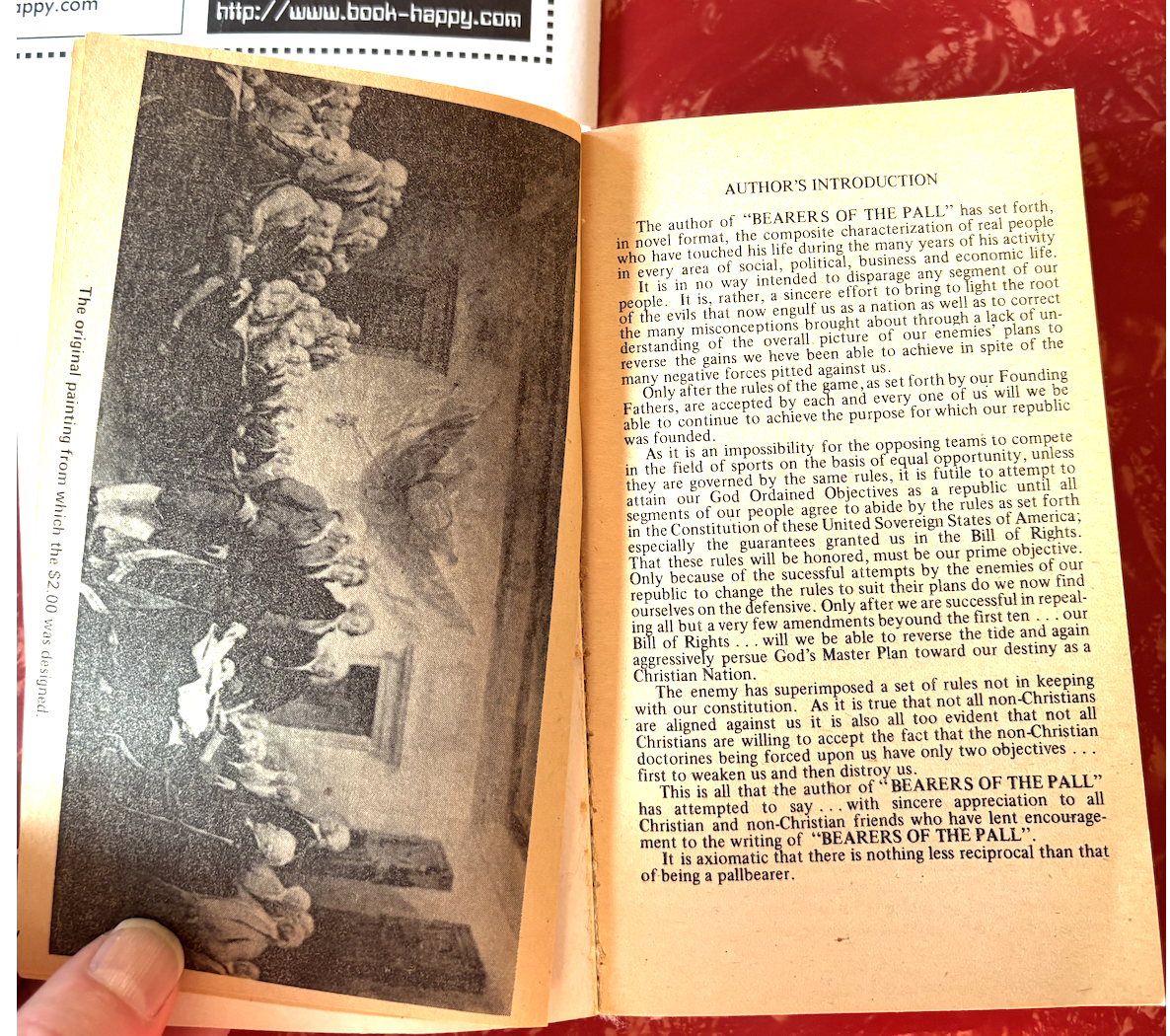
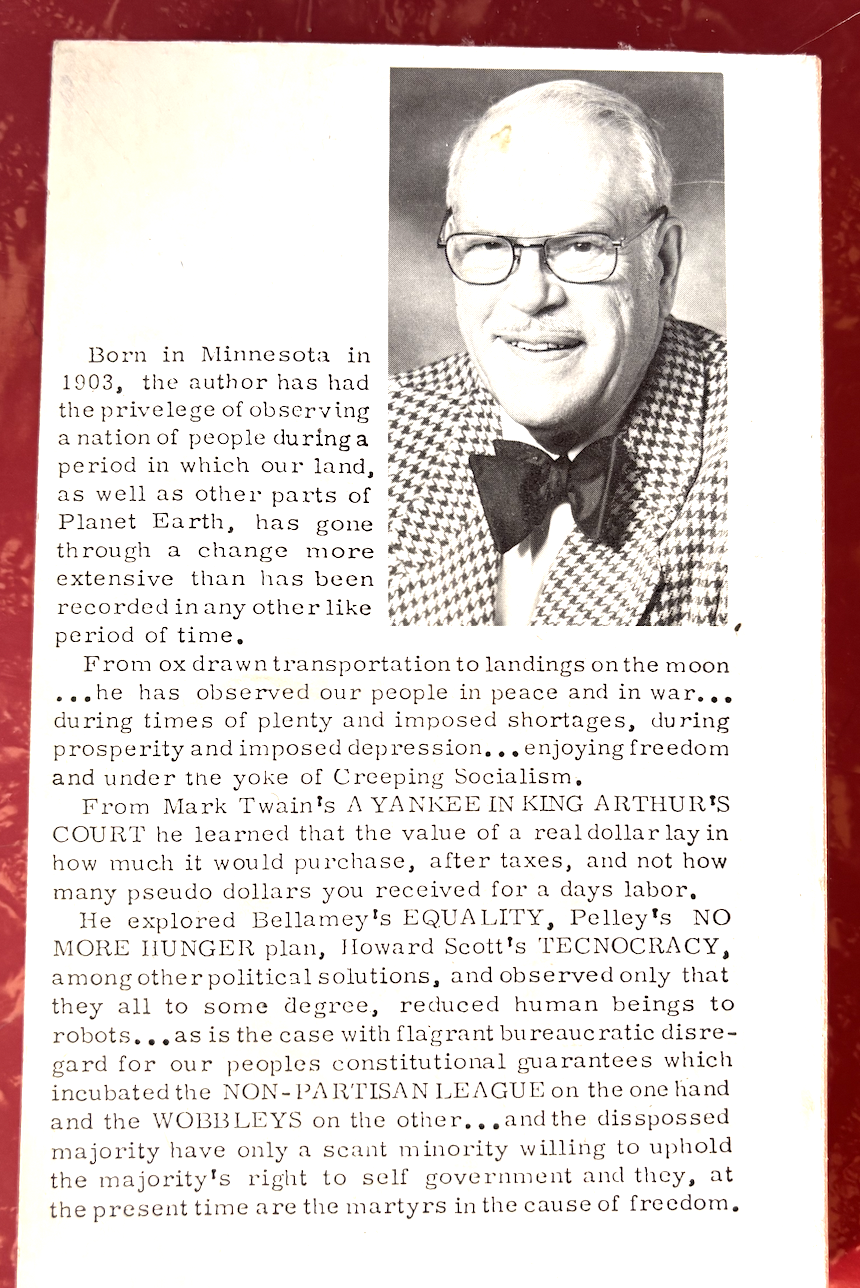
I frequently get asked some version of this question: “How can you spend so much time reading and writing about these Christian Nationalist weirdo extremists?” It’s taken me a while to come up with a satisfying answer, but I think I now have one. I’m fascinated by these people because they were my fellow Americans whose world view is quite familiar to me, and also they were my fellow Americans who would have been unbothered to see me and millions of people like me lined up against a wall and shot by the government. I don’t think Huss actually had the stomach to do this himself, but he definitely hung out with people who did. Had the political conditions arisen for large numbers of Huss’s fellow citizens (like me) to be liquidated by the government, he would have almost certainly been fine with it, as would many of the right wing Oregonians he inspired to become active in Republican politics. Those fascistic political conditions never emerged in Huss’s lifetime so we’ll never know what he would have done, but given that he was likely a Silver Shirt in the 1930s, I feel pretty confident he would have signed up for whatever colored-shirt sort of organization might have emerged. I take no pleasure from this slowly deepening realization that I’m living amongst a good number of fellow citizens who, if given permission by political leaders they admire, would happily see their fellow humans disappeared into an El Salvadoran gulag, or worse…but coming to peace with that realization feels like a kind of wisdom, maybe?
In the late 1980s when Donna started doing the research for her book on “kooks” and when I first encountered Huss-esque historical figures like Father Coughlin and Gerald LK Smith in a book I was assigned in an undergraduate history course, it seemed inconceivable to me that the fascistic ideas espoused by such people could ever gain enough traction in the US so as to make the mass pogroms they dreamed of even a remote possibility. The idea that this kooky style of right wing, conspiracy-addled, illiberal, expulsionist politics could ever get a substantial foothold in the GOP seemed implausible. The prospect that a GOP so constituted could gain control of all three branches of the federal government was unthinkable. I found the fabulistic fascists from the American past bizarre and hilarious, but they did not scare me.
I now know that “kooks” like Huss, Goff, and Ehr weren’t just weirdos to be laughed at, they were fascists with a taste for the blood of people like me. In their heyday they had easy access to printing presses and radio broadcasts that they used to pump out reams of conspiracy-addled drek, but their audience was quite small. The illiberal ideas they articulated (like the ones we see laid out in the introduction to Ehr’s Bearers of the Pall above) would have resonated with a significant chunk of the population at the time, but there was no institutional framework in which those ideas could be crystalized, embedded, and transformed into a politically potent force. As far as the post-McCarthy era gatekeepers in the GOP and the mainstream media were concerned, such paranoid and potentially violent talk about the internal Communist enemy and the need for America to realize it’s destiny as a Christian Nation was fringe kookiness that could be contained by the legal system and thus safely ignored by the grown ups in the room.
But over the last 30 years the gatekeepers have been sidelined and we now live in the time of monsters. We’ve learned a lot over the past 100 days about what the people who call themselves “conservatives” are willing to accept. The people who avidly read Gulag Archipelago in the 80s and 90s and prided themselves on living in a Constitutional republic that would never do such a thing, are now gleefully watching ASMR videos tweeted out by their hero in the White House that show shackled people who’ve been denied due process having their heads shaved, and then being frog marched into a slave labor camp run by a smirking, crypto-bro, El Salvadoran dictator. We’ve seen self-understood champions of “free speech” applauding as books are removed from libraries, Black history is erased from government websites, and news outlets are threatened with Presidential lawsuits and having their FCC licenses revoked. We’ve seen people who call themselves “patriots” look on approvingly as the President pardons the convicted rioters he inspired to violently storm the Capitol on January 6 to overturn the results of an election he falsely claimed he lost. Judges are being arrested. Foreign students are being deported for writing objectionable op-eds. The party whose campaign was powered by Soros memes and whose largest donor did an enthusiastic Hitler salute on the day of the inauguration is using the full force of the federal government to combat “antisemitism,” by which they only mean “expressions of sympathy for the plight of Palestinians.” I could go on with more monstrous examples, but you get the point.
Voltaire once said something to the effect of “he who can get you to believe absurdities, can get you to commit atrocities.” Each news cycle delivers a raft of new absurdities and no shortage of atrocities…who knows what is to come next. Black Americans have long lived with the awareness that many of their fellow citizens would be unbothered to see them dead or disappeared by “the authorities.” As an American socialized as white, this was not a burden I was taught to take on as my own. But as someone who was also Jewish, somewhere buried deep in my unconscious I think I was vaguely aware of that traumatic possibility, though until recently something inside of me resisted actively contemplating it. That sort of authoritarian trauma only happened elsewhere, right?
I’ll end with this passage from Benjamin Carter-Hett’s book about the death of democracy in Weimar Germany. Since I first read this in 2018, I’ve been haunted by this depiction of how so many ordinary Germans had their minds and souls gradually rewired by the changing political climate of the 1930s. Watching a similar dynamic happen here is terrifying.

Back in June of 2018 I posted this on Facebook with the hope that it might reach some of my former high school classmates from central PA who'd voted for Trump. Trump was trying to get these folks, most of whom had never cared about politics, to see their neighbors, to see me, as reviled enemies.
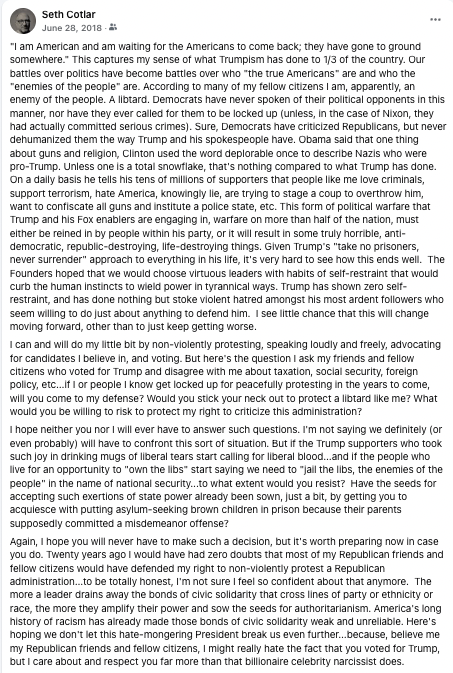
Trump's election in 2016 felt like a seismic event in US History at the time, but it took me a while to grasp just how potentially paradigm-shifting it might be. In the summer of 2018, when I wrote that Facebook post, I also wrote this piece which now seems incredibly naive. This is the thesis paragraph.
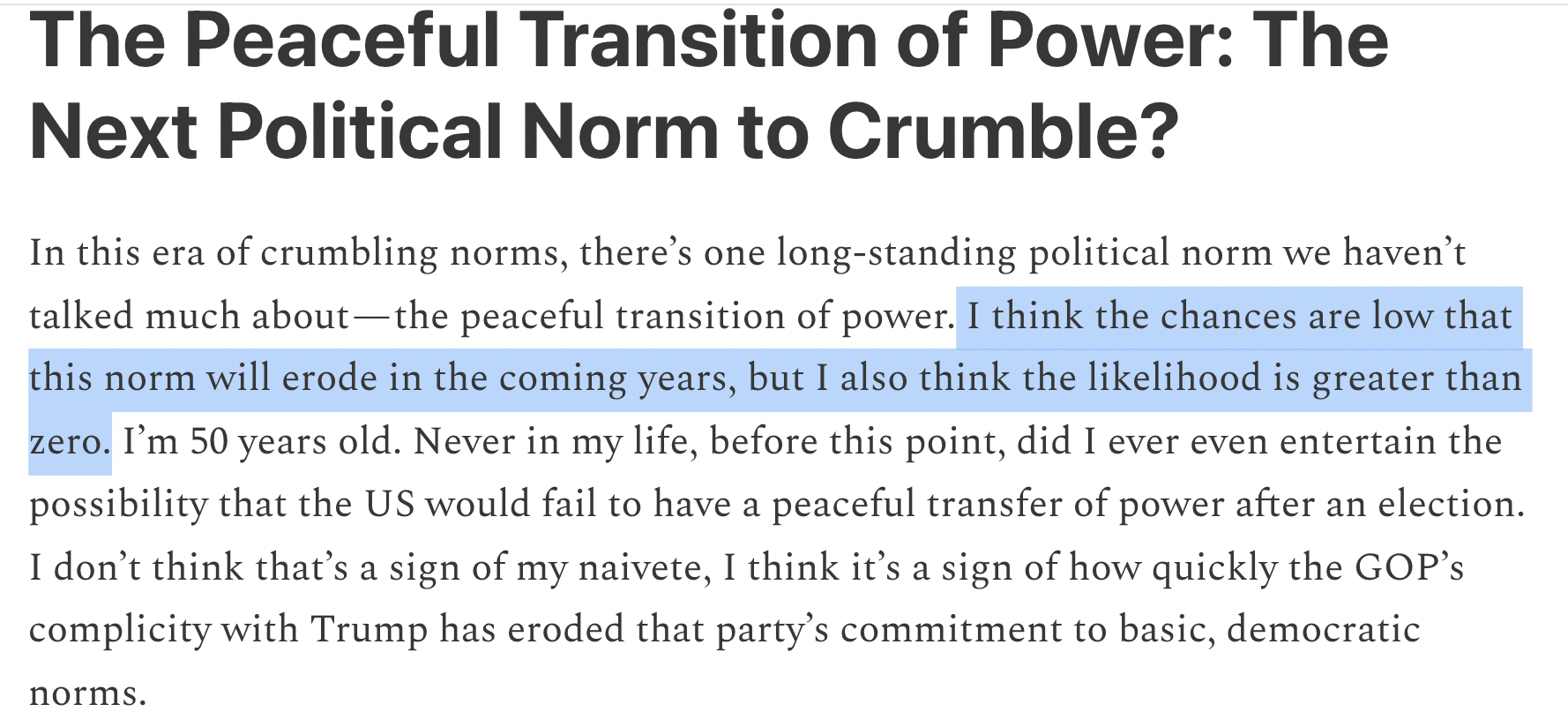
It is my entire job to understand US political history, and in the summer of 2018 I had this moment of what felt like insight where I said to myself "holy shit, what if we don't have a peaceful transfer of power sometime soon?" Obviously I thought it was possible...but it seemed so outlandish. Vestigial American exceptionalism dies hard apparently.
Trump's authoritarianism scares me...but what I find just as terrifying is the fact that when and if his attempted authoritarian breakthrough involves locking up or shooting at peaceful protesters like me, many of my neighbors and former classmates, people who know me, will side with him and not me. This is why the J6 revisionism is so significant. In the span of just four years Trump has been able to get tens of millions of Americans to rewire their brains such that an event that most of them watched with horror on January 6, 2021 is now remembered by them as "a day of love" and patriotism.
If he can get tens of millions of people to believe absurd, “kooky shit” about J6, immigrants eating pets in Ohio, Obama being a Kenyan Muslim, peaceable immigrants acksually being murderous monsters, and trans, intersex, or non-binary people simply not being metaphysically possible, then what atrocities will his supporters not condone?
Reading the political news these days feels as disorienting and bizarre as spending a few hours browsing the books in Walter Huss’s library. Here’s hoping we all get out as safely as Donna did back in 2003-4. Maybe we’ll even have a few funny stories to tell about all of the kookiness.
I feel obligated to note that we get water delivered because our house has 60-year-old galvanized pipes that make our water less than ideal for drinking. We do NOT get water delivered because we have a Hussian distrust of our city’s water supply, which is excellent…and fluoridated! ↩
